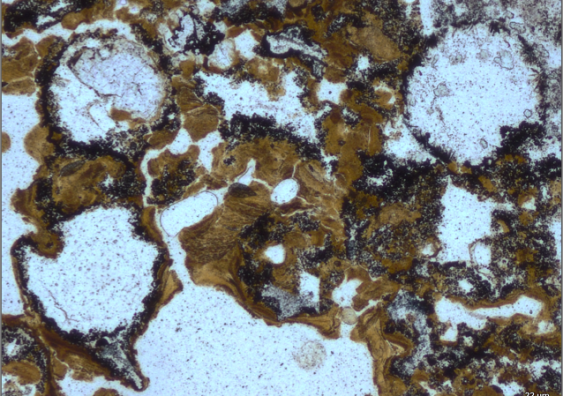Scientists find oldest evidence of life on land in 3.48 billion-year-old Australian rocks
Life on land started much sooner than scientists have previously thought, a new discovery suggests. Researchers found new fossil evidence in 3.48 billion-year-old Australian rocks , pushing back by up to about 580 million years the earliest known existence of inhabited terrestrial hot springs on Earth.
Fossils discovered by scientists form the University of New South Wales in 3.48 billion year old hot spring deposits in the Pilbara region of Western Australia have pushed back by 580 million years the earliest known existence of microbial life on land.
Before this discovery, the oldest microbial evidence of life on land that scientist had, came form Africa and was 2.7 to 2.9 billion-years-old.
“Our exciting findings don’t just extend back the record of life living in hot springs by 3 billion years, they indicate that life was inhabiting the land much earlier than previously thought, by up to about 580 million years,” says study first author, UNSW PhD candidate, Tara Djokic in an article published on the University’s site.
The implications of the new findings go even further as the fossils could be used to support the idea that life could have originated in freshwater hot springs on land as opposed to starting in the ocean and adapting itself to land.
“This may have implications for an origin of life in freshwater hot springs on land, rather than the more widely discussed idea that life developed in the ocean and adapted to land later. The discovery of potential biological signatures in these ancient hot springs in Western Australia provides a geological perspective that may lend weight to a land-based origin of life,” Djokic said.
It also offers new perspectives to those looking to find traces of life on Mars as the planet has ancient hot spring deposits, similar to those in Australia.
“The Pilbara deposits are the same age as much of the crust of Mars, which makes hot spring deposits on the red planet an exciting target for our quest to find fossilised life there,” said Professor Van Kranendonk, Director of the Australian Centre for Astrobiology and head of the UNSW school of Biological, Earth and Environmental Sciences, also involved in the study.

Within the Pilbara hot spring deposits, the researchers also discovered stromatolites – layered rock structures created by communities of ancient microbes. And there were other signs of early life in the deposits as well, including fossilised micro-stromatolites, microbial palisade texture and well preserved bubbles that are inferred to have been trapped in a sticky substance (microbial) to preserve the bubble shape.
“This shows a diverse variety of life existed in fresh water, on land, very early in Earth’s history,” says Van Kranendok.
In September 2016, Professor Kranendonk was part of an international team that found what is possibly the oldest evidence of life on Earth, a 3.7 billion-year-old fossil stromatolites in Greenland deposits that were laid down in a shallow sea. He has also given geological advice to NASA on where to land the rover on the 2020 Mars Exploration Mission.
And Pilbara could offer even more insight to those studying early life on Earth. This is why, according to Karendok, scientists are asking that the main sites to become protected bu being included in the World Heritage listing.